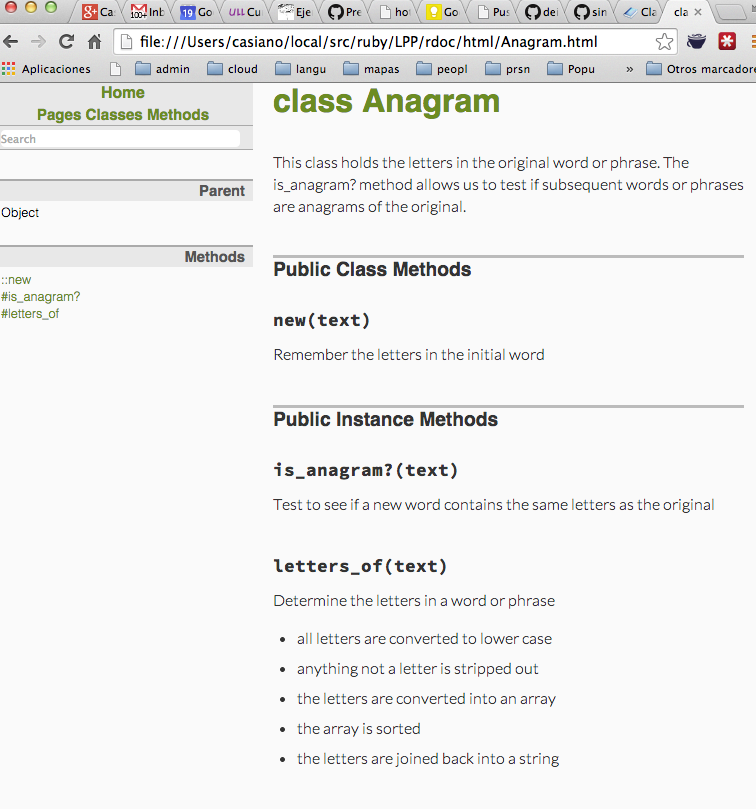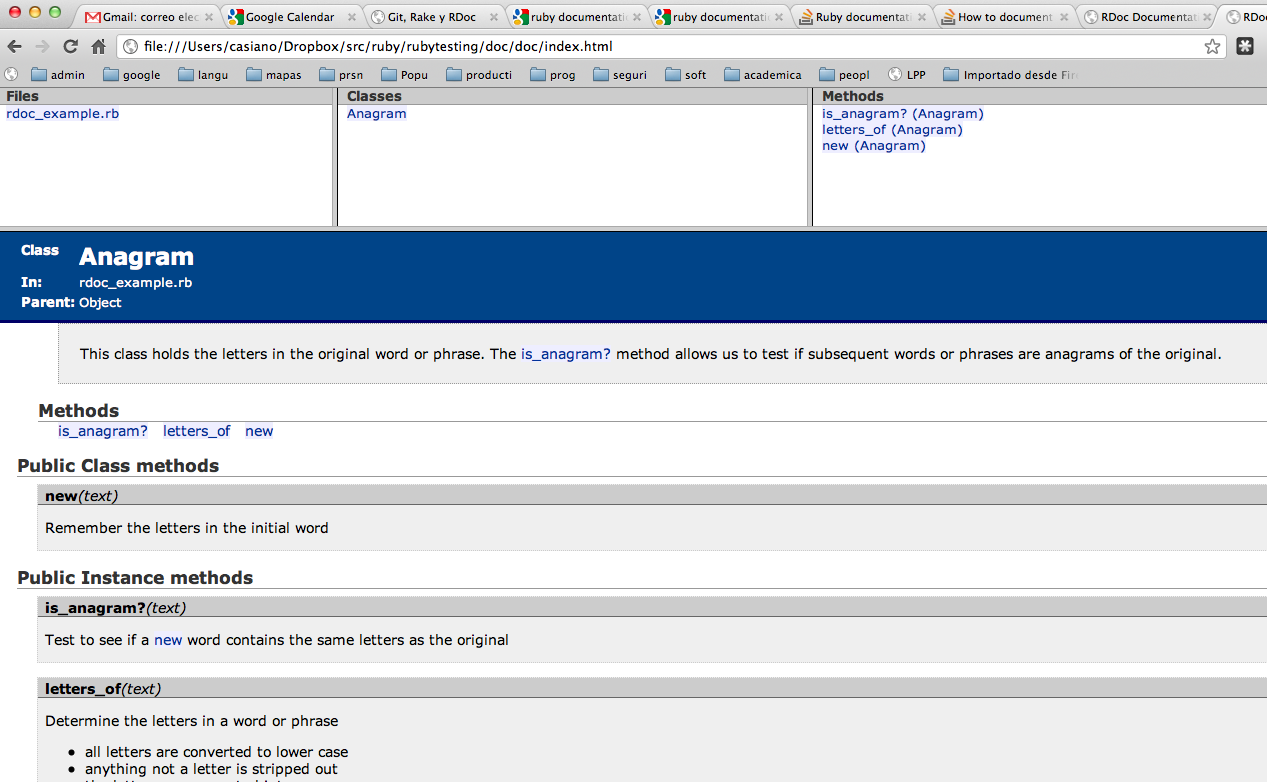


Siguiente: Buenas Normas de Documentación Subir: RDoc Anterior: Servidor de Documentación Local Índice General Índice de Materias
A typical small Ruby program commented using RDoc might be as follows. You can see the formatted result in EXAMPLE.rb and Anagram.
[~/srcLPPruby/rdoc(master)]$ pwd -P /Users/casiano/local/src/ruby/LPP/rdoc
# The program takes an initial word or phrase from
# the command line (or in the absence of a
# parameter from the first line of standard
# input). In then reads successive words or
# phrases from standard input and reports whether
# they are angrams of the first word.
#
# Author:: Dave Thomas (mailto:dave@x.y)
# Copyright:: Copyright (c) 2002 The Pragmatic Programmers, LLC
# License:: Distributes under the same terms as Ruby
# This class holds the letters in the original
# word or phrase. The is_anagram? method allows us
# to test if subsequent words or phrases are
# anagrams of the original.
class Anagram
# Remember the letters in the initial word
def initialize(text)
@initial_letters = letters_of(text)
end
# Test to see if a new word contains the same
# letters as the original
def is_anagram?(text)
@initial_letters == letters_of(text)
end
# Determine the letters in a word or phrase
#
# * all letters are converted to lower case
# * anything not a letter is stripped out
# * the letters are converted into an array
# * the array is sorted
# * the letters are joined back into a string
def letters_of(text)
text.downcase.delete('^a-z').split('').sort.join
end
end



[1] pry(main)> require './example'
=> true
[2] pry(main)> a = Anagram.new('foobar')
=> #<Anagram:0x007fd6d318f1a8 @initial_letters="abfoor">
[3] pry(main)> show-doc a.is_anagram?
From: /Users/casiano/local/src/ruby/LPP/rdoc/example.rb @ line 22:
Owner: Anagram
Visibility: public
Signature: is_anagram?(text)
Number of lines: 2
Test to see if a new word contains the same
letters as the original
Casiano Rodriguez León 2015-01-07